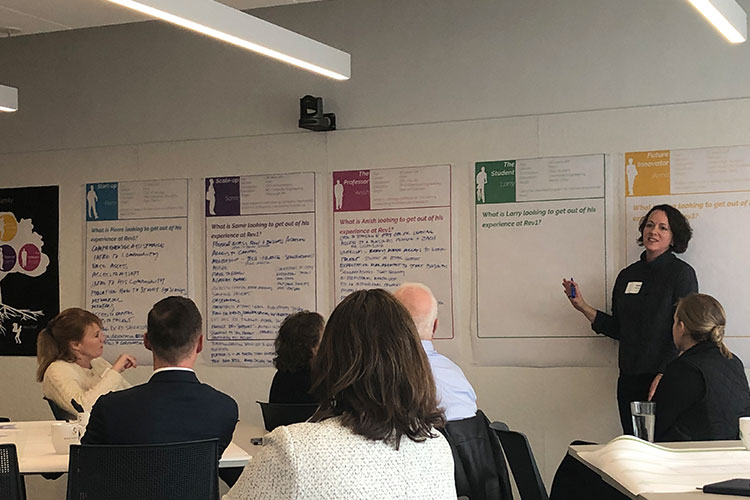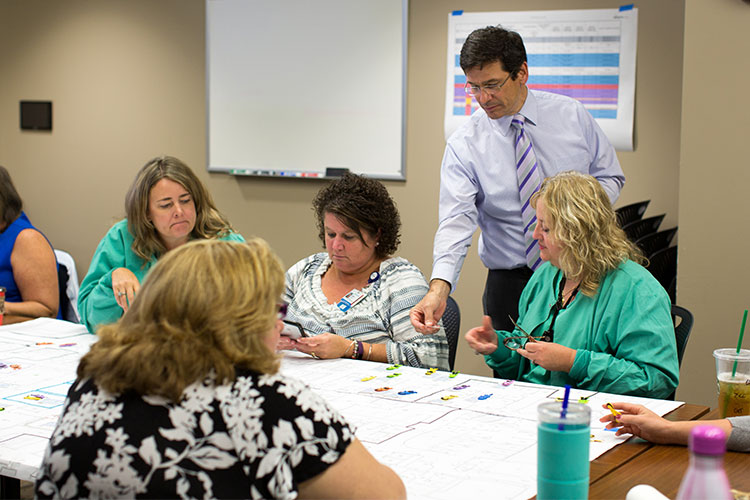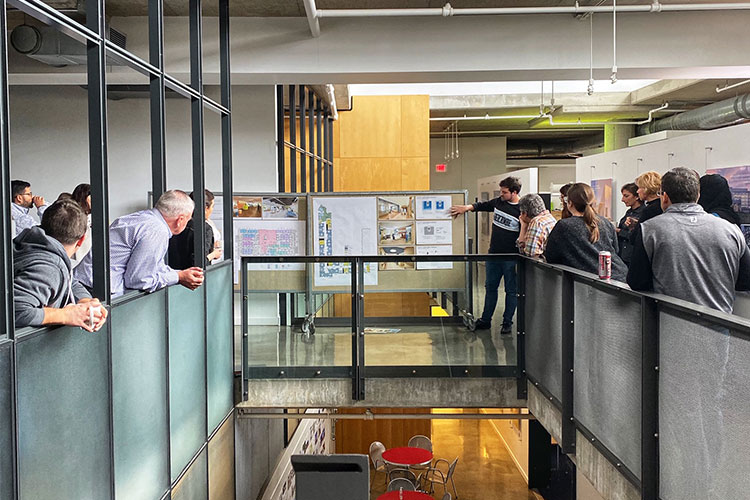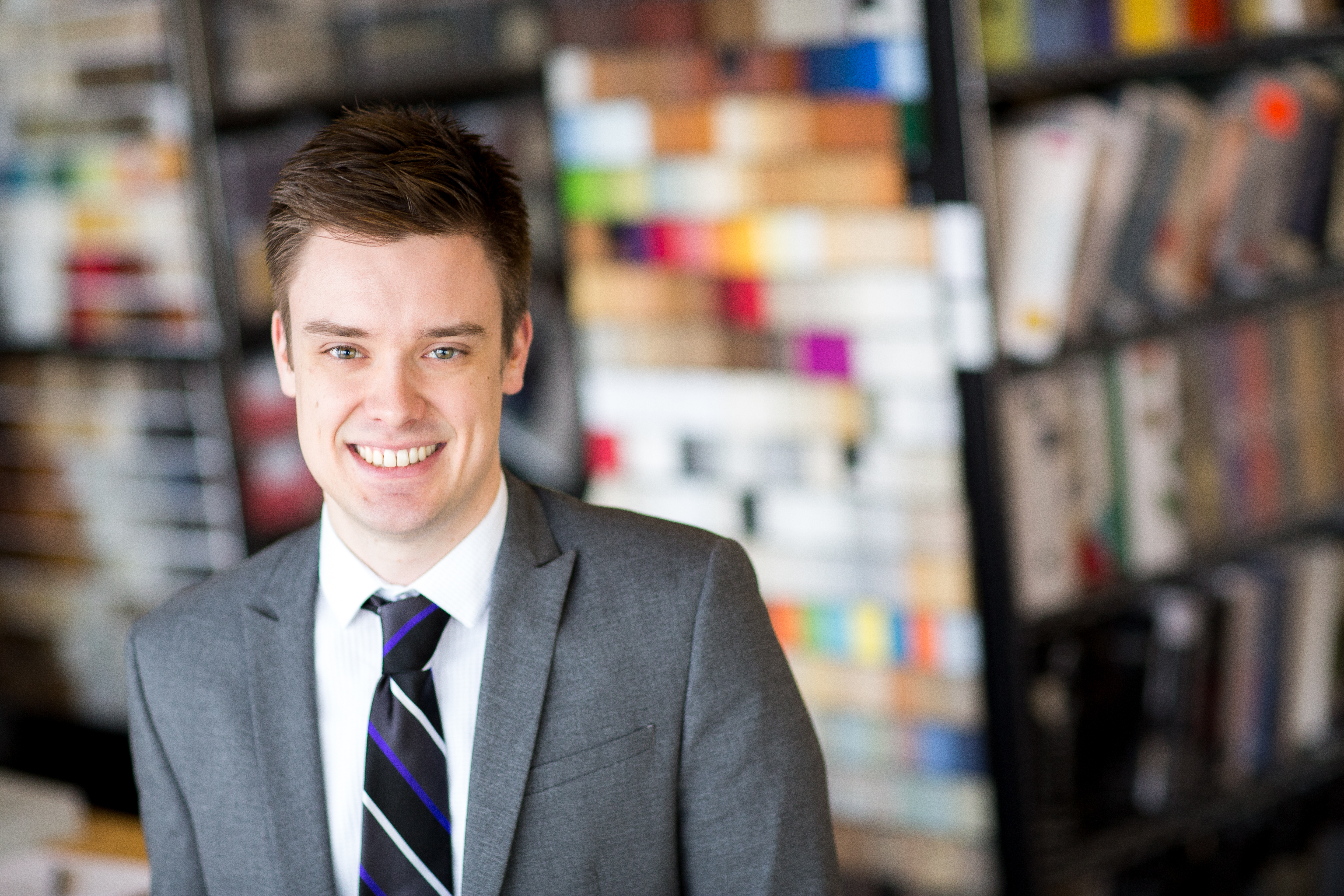DesignGroup’s design philosophy expresses how we work and think. Inside our firm, it’s a foundational vision. Outside the firm, it’s a differentiating approach that puts our clients and their communities at the center of everything we do. Here’s a closer look at how we define what we do every day.
By: Joe Mayer AIA, NCARB, WELL AP // Principal, Designer
As designers we are often asked, “what is your design process?” It can be tempting to try to answer this with step-by-step specifics or a cleverly alliterative flow diagram. But these approaches can belie the inherent complexity of putting a building together, the wide variation in specific goals of different projects, and the nuances of working in multiple geographic markets and building types. We want to foster broad, rigorous, and thoughtful application of expertise regardless of the project’s unique characteristics. We define a philosophy about design itself rather than a prescriptive process for achieving it.
We see Design as a translation from Mission (how the project is grounded in the client) to Impact (the unique aspirational objectives for the project).

Mission
Mission represents who, at their core, the client is. It’s what makes them tick. It’s how they see their place in the community, their public perception, and their objectives for the future. It’s their brand image, their customer/patient/user/resident/tenant/student profile, and their business case for the project. Every design must be grounded in a deep understanding that the client’s mission is both unique and dynamic. To achieve this, it takes empathy on the part of the design team and a true desire to listen.

Grounding a project in mission requires up-front work. Great design doesn’t happen in a vacuum. Grounding a project in mission isn’t just understanding the personal likes and dislikes of the people on the other side of the table. It’s understanding what made them take those seats in the first place, and what their dreams for their projects can mean.
A solid foundation in the client’s mission allows for an objective baseline for project decisions, while at the same time allowing, or maybe even promoting, the validity of disparate definitions of beauty. In other words, good design, grounded in mission, allows people to find beauty in different ways rather than trying to conform to a single style. There is no such thing as timeless style, but this degree of objectivity does allow for timeless design. A quick note on beauty: yes, we want to create buildings that are beautiful, and as architects and designers, of course we still care about proportion, scale, hierarchy, etc. – the foundational tenets of form making. Beauty makes us happy after all, but beauty is subjective.
Impact
Impact is achieving of the unique aspirational objectives for the project. It’s how the project has affected change, spurred growth, or created meaningful experiences. These objectives require thinking beyond who the client already is, as that is the mission in which the project is already grounded. These goals are how we take the client to places above expectations and beyond the status quo. We help lead the client to these goals through a series of up-front visioning exercises that are customized to the unique needs of the project. The goal is to work toward an understanding of not just what the project looks like, but what it means.
A successful project asks how the environment is affected, both in terms of initial resource expenditure and long-term resource investment. It seeks to understand how the project advances health and wellness – of staff, of users, and of the larger community.
Design translation from mission to impact creates not just growth, but strategic advancement, whether personal, professional, or institutional. This process is a mechanism for establishing and furthering brand identity, creating competitive advantages, or capturing market share. It can improve staff retention, attract new students, and enhance customer satisfaction. It can foster innovation, empower learning, and instill confidence.

Impact is so much more than appearance. It is what it feels like when the client first walks into the building when it opens. It’s how the building creates a calm environment for a patient’s anxious family member, or energizes an employee, or feels safe for a new student. This creates a conscious relationship with the community: an understanding of how the project shapes the community, and how the community in turn shapes the project once the doors are opened. Impact is how the project connects to a network beyond the project itself, such as a health system, campus, or neighborhood.
By seeing design as a translation from mission to impact, these pursuits are not simply theoretical – they are real, measurable, and specifically relevant to each client. The building is not just a representation of a moment in time, but an investment in the future.
Design
We like to think of design as a verb, rather than as a noun – that is, we see design as action, an application of lenses, a layering of meaning. The building is then neither the simple replication of a client wish list nor the manifestation of any one designer’s personal style.
Design thought of as a noun can be a trap, as it produces a product that tends to overrepresent mission or impact alone rather than navigate the complex but meaningful path between the two. Mission without impact is a representation of who the client already is, regardless of capital investment – perhaps familiar, but without an eye to progress. It is what clients already know, see, and understand. Design should advance understanding and add value. Impact without mission may lead to interesting form and space, but miss foundational financial, operational, or functional objectives that are required by the client.

A focus on design as a translative act (verb) and not as an object (noun) allows us to create an objective framework for establishing priorities and making project decisions focused on quality, outcomes, and meaning. In other words, the project is driven by decisions that clearly draw a line between who the client is and a larger aim for the project.
Good design should not be about “meeting in the middle.” Questions of value should not be approached with an either/or mentality. Good design takes a both/and approach to problem solving, just as good design, with respect and empathy, actively navigates between relevance and aspiration rather than putting them at odds with each other. By actively focusing on design as the translation from mission to impact, the process is smoother, decision making is more efficient, and the outcomes are ultimately more meaningful – to the client, to the building’s users, and to the community.
Meet the Author:

Joe Mayer AIA, NCARB, WELL AP // Principal, Designer
As a Designer, Joe has contributed to many award-winning projects including the Columbus Museum of Art expansion and Columbus Metropolitan Library Hillard Branch renovations. He is committed to the belief that great design can help create successful communities. Over his 11 years tenure, he has demonstrated an ability to communicate and find consensus amongst various stakeholders resulting in an integrated and cohesive solution. In addition, Joe is a recent Leadership Columbus graduate and has led youth-based design education programs, such as Columbus Center for Architecture and Design’s Camp Architecture program.
